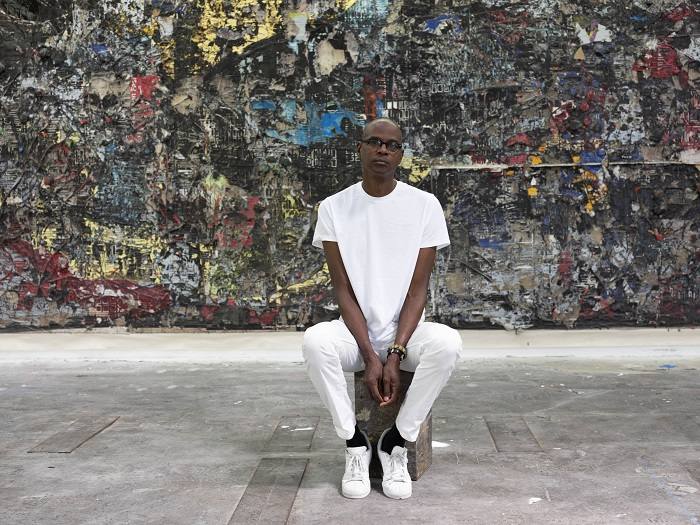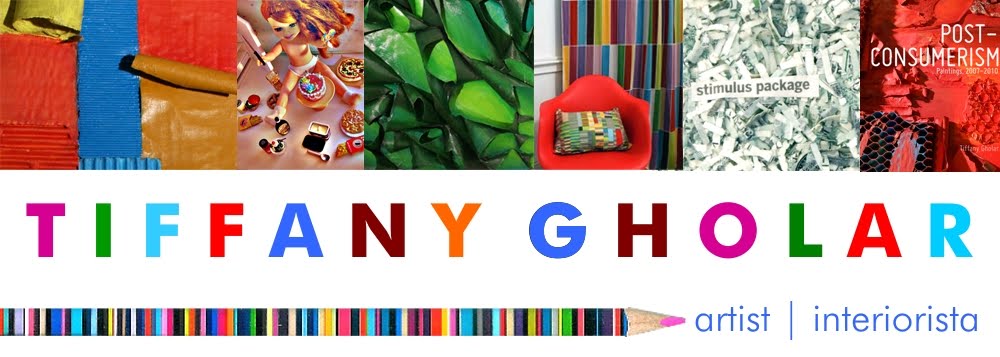This Black History Month I decided to highlight some of my fellow Black abstract artists. Why abstract artists, specifically? Because of something that keeps bothering me. In all the years that I've been exhibiting my work, I've noticed that Chicago's art scene is often as segregated as its neighborhoods. There are many times when I have been the only Black artist in an abstract art show, and with a few notable exceptions, I haven't had many opportunities to be featured in shows that cater to a predominantly Black audience. This is not because of any hostility on the part of my fellow Black artists. They have always been supportive and welcoming.
But I am afraid that I can't say the same about the gatekeepers of the most influential channels for Black artists here. I feel like they constantly overlook my work in favor of representational work, figurative work in particular. And a few years ago while attending a talk led by a Black collector known for his voracious appetite for art by Black artists, during the discussion that followed, I finally worked up the nerve to express my frustration in public. But he disagreed with me. It wasn't true for him or the collectors he knew. I felt so embarrassed that I slipped away to the refuge of my studio, wishing that I'd never opened my mouth. Maybe I was wrong. Maybe it was just me.
However, as more prestigious galleries in New York and abroad announce their better-late-than-never celebrations of the work of Black abstract artists who are nearing the end of their lives, I keep seeing articles and press releases that make me feel vindicated. Yes, my observation was correct. Yes, there really is a problem. The art world of the dominant culture ignores Black artists just as the culture as a whole ignores Black filmmakers, writers, actors, lawyers, doctors, students, and blue-collar workers. And in the sphere of Black art collectors who are hungry for images that celebrate Black excellence or portray Black pain as an act of protest, non-representational art often gets left out of the conversation.
In addition to the heartening words in the exhibition statement at last year's Solidary and Solitary show at the Smart Museum, which I quoted in my blog post about it, there is a growing collection of articles from artists and arts writers who agree with me:
“You find these artists being marginalized on both ends of the
spectrum,” Cassel Oliver continues. “There was this manifesto with the Black Arts Movement
that you did work that reflected the beauty of that community in no
uncertain terms,” she says, referring to a group that coalesced in the
1960s to promote social and political engagement in art and literature.
“Oftentimes abstract painting is not as celebrated as more figurative
work by the black community. From the mainstream art world, it’s just
the sense of not being preoccupied with what black artists are doing,
period.”
—Hilaire M. Sheets, Art in America
The second issue, concerning “authenticity” and “the black experience” is generally discussed in relation to the Black Arts movement and its preference for images that contested the pervasive vilification, ridicule, and disparagement of African Americans in US popular culture. But the split that imagined “African American artist” as incompatible with “abstract artist” predates the Black Arts movement by decades. As abstraction gained momentum after the war, black American artists were at the forefront of aesthetic debates, but unlike their white counterparts, they also had to contend with an art world that saw them first as black and second as artists. In his 1946 essay “The Negro Artist’s Dilemma,” Romare Bearden criticized the tendency to evaluate work by black artists based on “sociological rather than aesthetic” criteria. Although Bearden himself worked in a more representational vein, he was acutely aware that as long as the sociological dominated the conversation, the formal innovations of both figural and abstract artists of color would continue to be dismissed.
—Michael Rosenfeld Gallery
Hassinger, for her part, is outspoken about the necessity of resisting the temptation to reduce black art to black political art: “Insisting that black people talk about their blackness and about their trauma almost exclusively makes it a style, a trend like Minimalism,” she says in the catalogue. “The sale of black trauma is artificial, offensive, and being an artist is not about being artificial.”
...According to the catalogue, Amiri Baraka, leader of the Black Arts Movement, once told O’Neal that her all-black abstractions in the 1970s were not Black enough. “How much blacker can it get?” she is supposed to have replied.
—Ben Davis, artnet
It's hard enough to be a Black artist in this world, harder still when your preferred way of expressing yourself is judged as "not Black enough." Taking university level art classes can be a lonely experience because there are so few African-American artists in the art history canon. Putting this list together was inspiring because I came across so many artists I hadn't heard of before, many of whom make work that reminds me of my own. It was like discovering long-lost family members. I had planned to limit the list to 29 artists, one for each day of this Leap Year February, but there were too many good ones that I couldn't bear to leave out.
![]()
I hope you take the time to go to these artists' sites to see their work, and if it is on view in a gallery or museum near you, see it in person. Perhaps the growing interest in the work of African-American abstract artists will help to expand the notion of what "Black Excellence" looks like.



































No comments:
Post a Comment